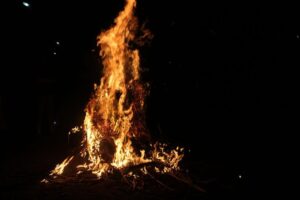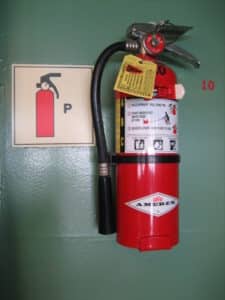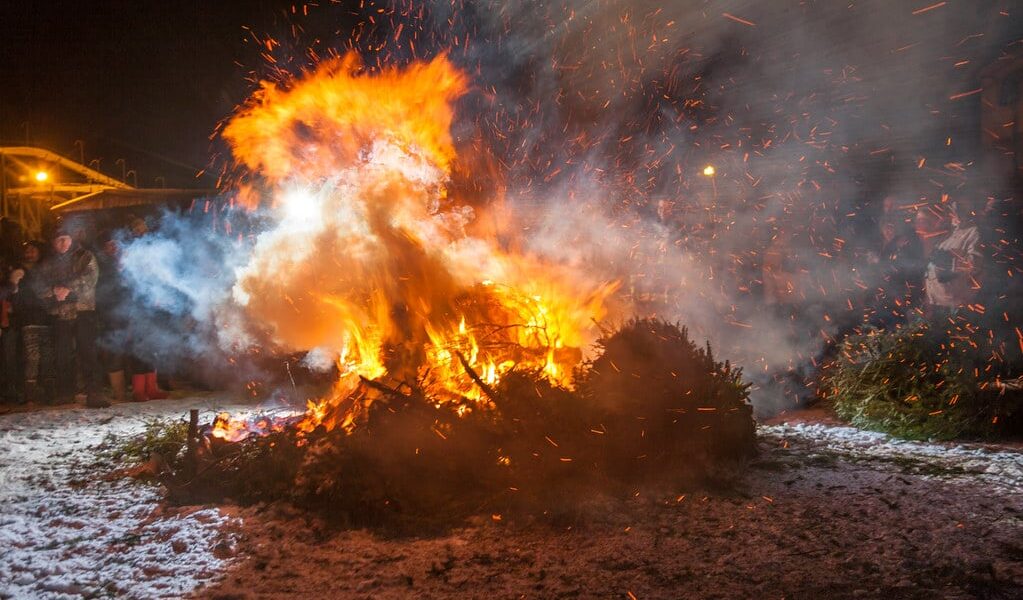Bonfires are a great way to enjoy outdoor gatherings in the fall, providing warmth and ambiance. However, they come with risks, especially if not handled with care. To ensure a fun and safe experience, it’s essential to follow bonfire safety guidelines and take measures to prevent outdoor fires from spreading.
Below are some key fire safety tips to keep in mind when organizing or attending a bonfire.
1. Choose the Right Location
Location is one of the most critical factors when it comes to bonfire safety. Always set up your bonfire away from flammable materials, including:
- Dry Grass
- Leaves
- Trees
- Overhanging Branches
Ideally, the fire pit or bonfire should be at least 50 feet away from structures, fences, and vehicles.
How to Prepare the Location
- Clear a minimum 10-foot radius around the bonfire site by removing leaves, twigs, and other combustible materials.
- It’s also a good idea to use a designated fire pit or build a fire ring out of rocks to contain the flames and reduce the risk of the fire spreading.
Pro Tip: Check your local regulations for specific distances, as some areas may have stricter guidelines.
For more tips on fire damage prevention, read our article: How to Prevent Fire Damage In Your Home
2. Check Weather Conditions
Before lighting a bonfire, always check the weather forecast. Windy conditions can cause embers to fly out of control, potentially igniting nearby areas. Avoid having a bonfire on particularly dry or windy days, as the fire could quickly spread beyond your control.
Even if the wind is mild, you should still be cautious. Ensure everyone around the bonfire knows which way the wind is blowing, as this will help direct the smoke and sparks away from guests and nearby structures.
3. Keep Water and Fire-Extinguishing Tools Nearby

Always have a means of controlling the fire within reach. This includes keeping a bucket of water, sand, or a garden hose nearby to quickly extinguish small fires or embers that may escape the bonfire area.
In addition to water, consider having a fire extinguisher on hand, especially if you’re in a more rural or wooded area. Ensure that anyone who is attending the bonfire is aware of where the fire-extinguishing tools are located and how to use them in case of an emergency.
4. Use Safe Materials for Burning
Burn only natural, untreated wood in your bonfire. Never throw in materials like plastic, painted or treated wood, or hazardous chemicals, as they can release toxic fumes. Also, avoid using gasoline, lighter fluid, or other accelerants to ignite the fire, as these can lead to dangerous flare-ups.
Pro Tip: If you’re building a larger bonfire, stack the wood in a teepee or log cabin formation to encourage airflow and prevent the fire from becoming too large or unpredictable.
Get info on fireplace safety here: Fireplace Safety Tips for Winter
5. Supervise the Fire at All Times
Never leave a bonfire unattended, even for a short period. Always designate a responsible adult to keep an eye on the fire. Children and pets should be kept at a safe distance to prevent accidents. If alcohol is present, ensure that the person watching the fire is sober and able to act quickly if something goes wrong.
Note: If the fire starts to grow out of control or spread, act immediately by dousing the flames with water or sand and calling emergency services if necessary.
6. Extinguish the Fire Completely
When it’s time to end the evening, make sure the fire is fully extinguished.
- Pour Water Over the Embers
- Stir Them with a Shovel
- Pour Water Again
Don’t leave the site until you’re sure the fire is completely out, as even small, smoldering embers can reignite hours after the fire appears to be out.
7. Follow Local Laws and Guidelines
Many regions have specific laws governing outdoor fires, including whether you need a permit to have a bonfire. Check with local authorities or the fire department to understand the rules in your area. In times of drought or during fire bans, avoid lighting any fire, as conditions are more likely to lead to wildfires.
Stay Safe this Fall
By following these bonfire safety tips, you can reduce the risk of your outdoor fire spreading and ensure a safe, enjoyable experience for everyone. Remember that preparation, caution, and vigilance are key to preventing accidents and protecting both people and the environment.
If you experience fire damage of any kind, contact 24 Hour Flood Pros for fast and effective emergency restoration!




